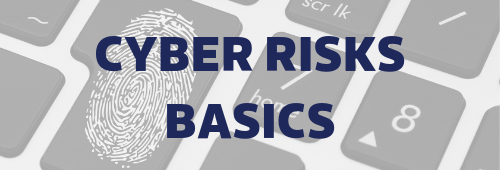 Cyber Insurance Protects Your Business
Cyber Insurance Protects Your Business
Having comprehensive cyber insurance coverage is essential for businesses to mitigate financial risks and protect themselves from the potentially devastating consequences of cyber attacks and data breaches. It's important to carefully review and select a policy that addresses the specific cyber risks faced by your business and provides adequate coverage for potential losses.
Cyber insurance typically offers coverage under different categories:
First-Party Coverage
Designed to cover damages suffered directly by the insured business due to a cyber breach. This can include expenses such as investigative services, business interruption coverage, and data recovery.
Third-Party Coverage
Intended to cover damages incurred by third parties, such as customers or partners, as a result of a cyber attack on the insured business. This may include legal fees, settlement costs, and liabilities arising from security failures.
Cyber Crime Coverage:
Covers damages resulting from illegal activities conducted using digital means, including extortion, phishing, social engineering, and wire transfer fraud.
The ways that organizations can attack a small business are endless, with some of the most popular being:
- Man-in-the-Middle (MitM) Attack:
Hackers intercept communications between two parties to eavesdrop on or manipulate information exchange, potentially leading to data theft or unauthorized access.
- Distributed Denial of Service (DDoS) Attack: Attackers overwhelm a business's network or website with excessive traffic, rendering it inaccessible to legitimate users and disrupting operations.
- Malware: Malicious software infects a business's computers or networks, enabling attackers to steal data, spy on activities, or disrupt operations.
- SQL Injection:
Attackers exploit vulnerabilities in a website or application's database to execute malicious SQL queries, gaining unauthorized access to sensitive data.
Ultimately, the human factor tends to be the greatest assets and weakness when fighting cyber threats. Phishing attempts and social engineering are two very common tactics that bad actors use to attack your businesses.
- Phishing: Cybercriminals use deceptive emails or messages to trick employees into disclosing sensitive information like login credentials or financial data.
- Social Engineering:
Cybercriminals manipulate individuals through deception to obtain sensitive information, access systems, or perform actions that compromise security, highlighting the importance of employee awareness and training.
Key components of cyber insurance coverage include:
- Business Interruption:
Compensation for lost profits due to interrupted operations caused by a cyber event.
- Bricking: Coverage for replacing hardware rendered inoperable due to cyber attacks.
- Computer Fraud:
Protection against theft of funds or property using cyber methods.
- Data Restoration:
Expenses related to restoring lost or damaged data.
- Extortion/Ransomware Coverage:
Reimbursement for ransom payments and damages caused by cyber extortion.
- Funds Transfer Fraud:
Coverage for losses resulting from unauthorized fund transfers.
- Notification Costs:
Reimbursement for expenses related to notifying affected individuals of a data breach.
- Privacy Regulatory Liability:
Coverage for losses due to regulatory investigations and claims.
- Social Engineering Coverage:
Protection against unintended payments made to cybercriminals through deception.
- Third-Party Liability Claims:
Coverage for damages resulting from third-party claims or lawsuits related to a cyber event.
By investing in cyber insurance and understanding the extent of coverage it provides, businesses can mitigate financial losses and recover more swiftly from the impact of cyber breaches.
For help or to answer any insurance related questions about cybersecurity, please contact our team today at 217-528-7533 or e-mail us info@troxellins.com.